D'hoore: Playing the game at Tour of Flanders
Four-time Belgium champion dissects the cobbles and bergs to Oudenaarde
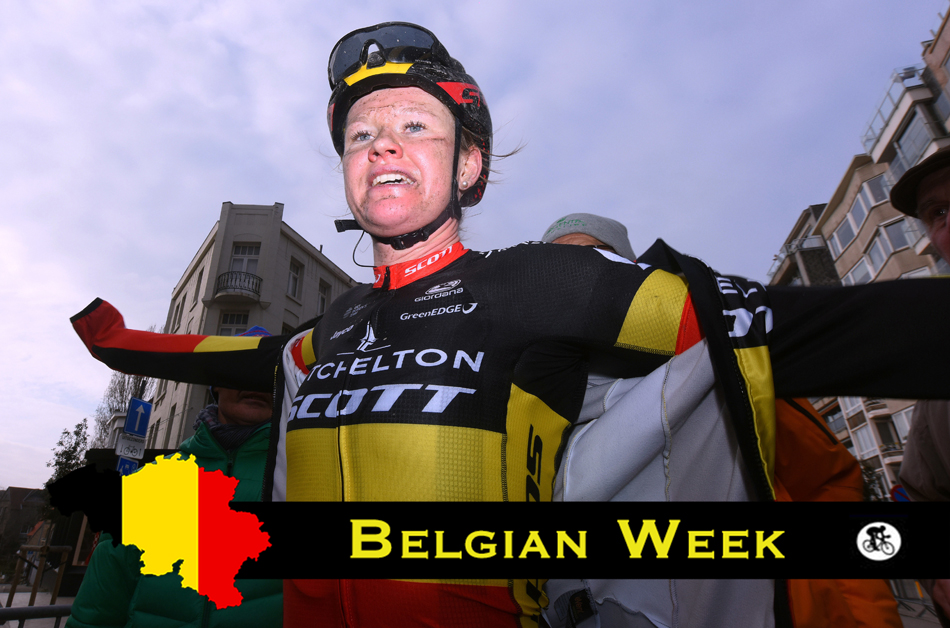
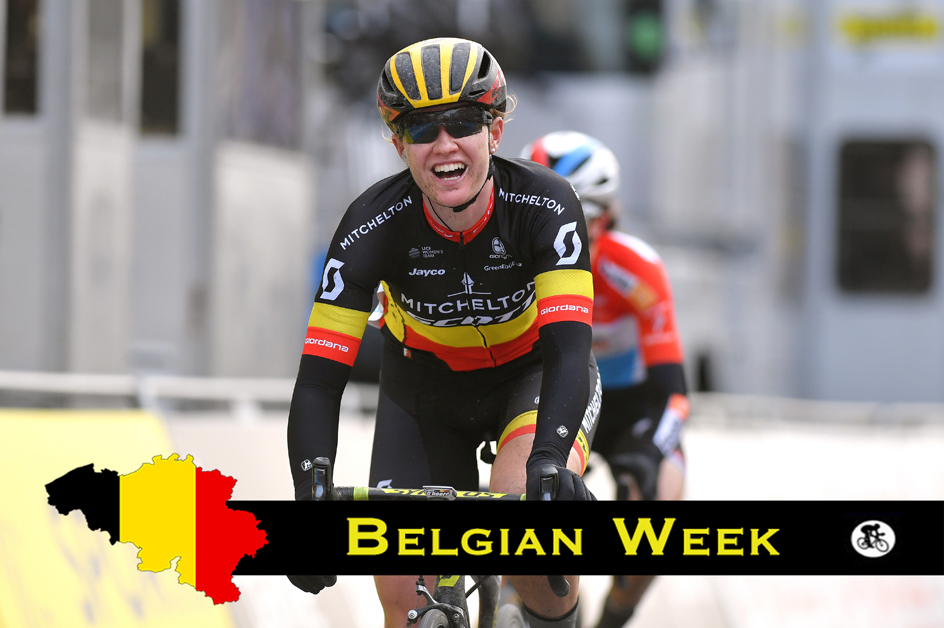
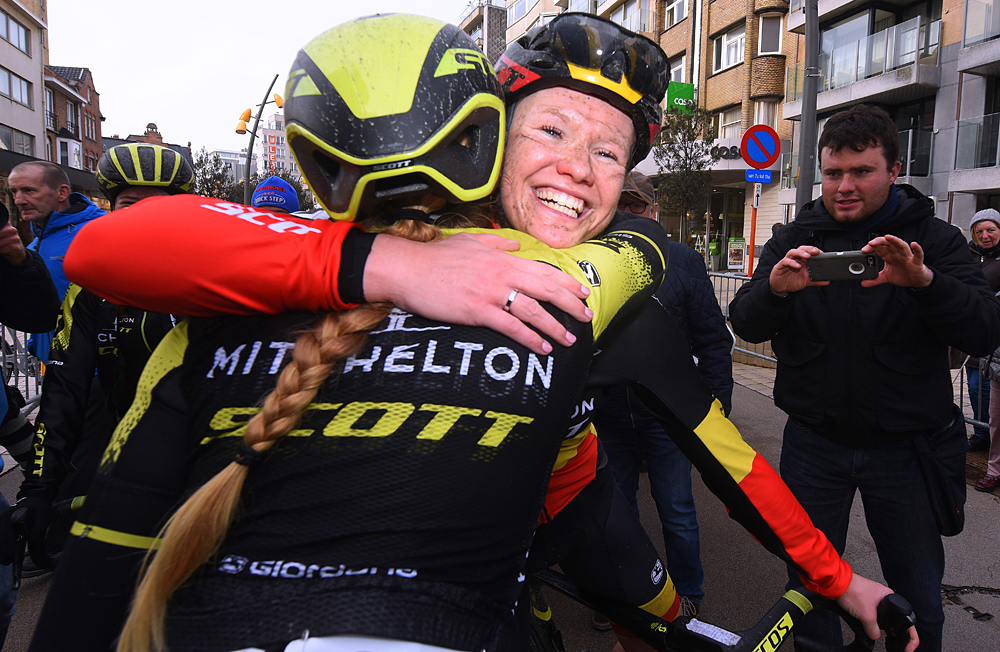
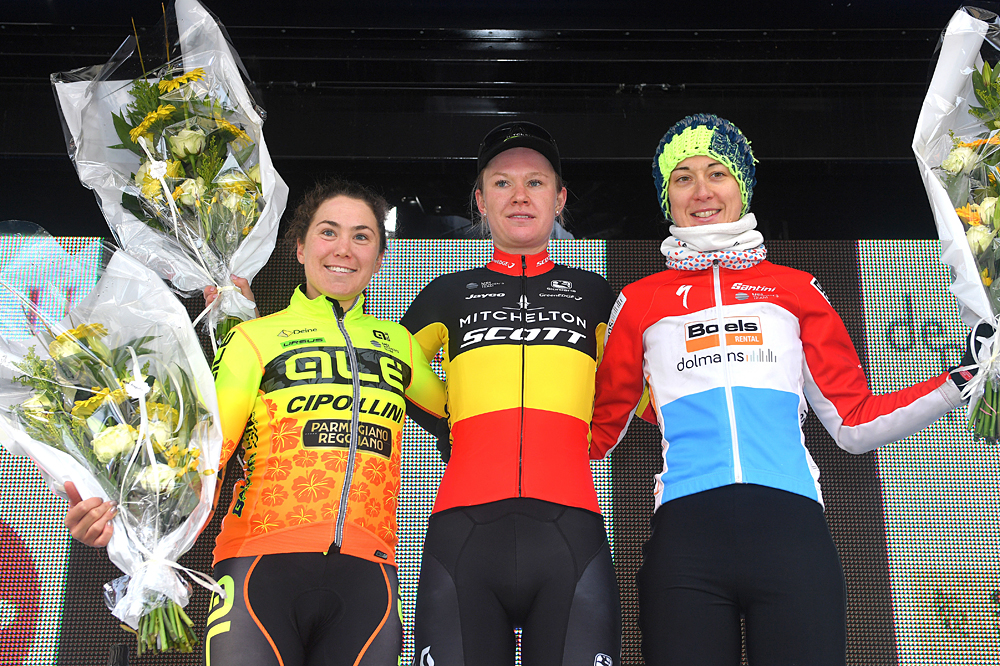
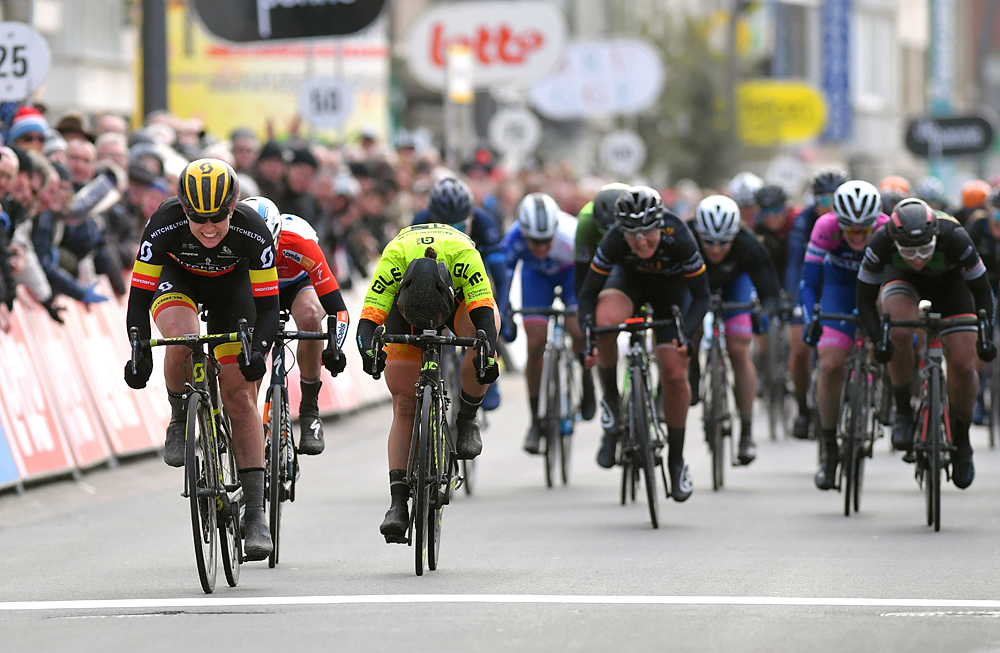
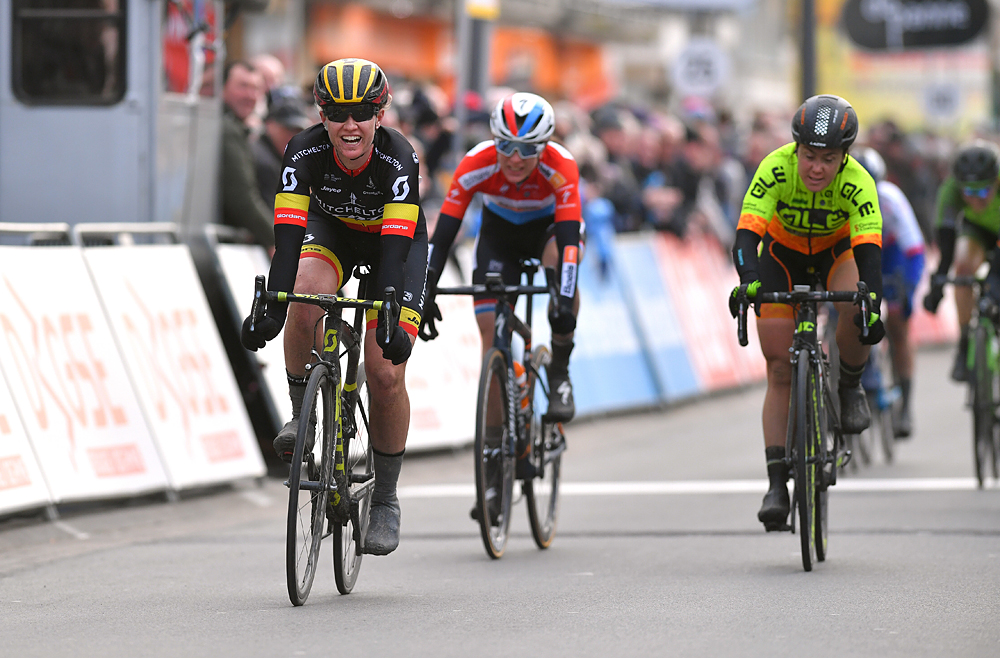
This article is part of 'Belgian Week' on Cyclingnews, a special run of features to celebrate the start of the Classics. For all our Belgian Week content click here.
24 teams named for Women's Tour of Flanders
Blaak aims for Tour of Flanders after claiming world title
Flutter in Flanders: Taking bets at the Classics
Tour of Flanders Women 2018 - Past winners
D'hoore wins Women's WorldTour race in De Panne
Women's Tour of Flanders: Six of the best
D'hoore unaware she was sprinting for Driedaagse De Panne victory
D'hoore takes aim at Gent-Wevelgem, De Panne video highlights - Women's news shorts
"Jolien! Jolien! Jolien!" chant the rowdy fans from the side of the road as Jolien D'hoore pushes over the steeply cobbled bergs. Her heart rate is close to maximum, but she can't even hear herself breathe, and then the grade kicks up again. They're all cheering for the Belgian champion.
The instantly recognisable black, yellow and red bands across her jersey give her automatic celebrity status at her country's iconic Tour of Flanders.
"They scream my name. Loud," D'hoore laughs. She's been the national champion four times, and she's still a bit timid about the amount of attention she gets during the Classics season. She says that anyone off the street could wear the Belgian jersey and fans would cheer equally as loud - she's also modest.
"Some riders in the bunch think it's really funny because they hear 'Jolien' all over the course. It happens for the whole race. It's really nice because it pushes me and motivates me to get up the hills.
"Sometimes I can't even hear myself breathing when I go over the top of the bergs. I get so much support, and that's nice.
"No, I wouldn't say that I'm a celebrity. People celebrate my jersey. They just recognise me because I'm wearing the Belgium jersey."
Get The Leadout Newsletter
The latest race content, interviews, features, reviews and expert buying guides, direct to your inbox!
D'hoore is the first person to admit that you don't need to give Belgians a reason to celebrate the Tour of Flanders. It's akin to a national holiday.
And it's not just Flanders; Belgium is some-what monopolising the one-day racing on the 2018 Women's WorldTour. The country hosted the inaugural women's Driedaagse De Panne on Thursday, which D'hoore won from a bunch sprint, and Gent-Wevelgem is next up on Sunday. Even though they're both prestigious in their own right, they're warm-ups for Flanders on April 1.
And then come the Ardennes Classics, which take a trip to the Netherlands for Amstel Gold Race on April 15, but then its back to Belgium for La Flèche Wallonne (April 18) and Liège-Bastogne-Liège (April 22).
"They're all important, and I'm proud of my country for having such a big place on the Women's WorldTour calendar. Of course, Tour of Flanders is the biggest one day race of the year," she says, well aware that the women's race has a relatively short 14-year history and that its cultural significance is rooted in the Ronde van Vlaanderen, with its first edition in 1913.
"It has a big name. It has always been a prestigious race with a lot of history - 100 years of history - so all together that makes it very special. It's like a holiday in Belgium. For the women's race, it's special because we aren't used to having that many spectators."
Interestingly, it's a rare occasion when a Belgian rider stands on the podium at the women's Tour of Flanders. In fact, only one has ever won it - Grace Verbeke in 2010. D'hoore has been the only one to come close to winning it after placing second in 2015.
"That's hard to explain," D'hoore says. "The level of women's cycling is still not as high as it is in other countries, like the Netherlands, for example. Flanders is the biggest one-day race in the world for women and so to win, we need to have the world's best riders. Unfortunately, until now, we still don't have those kinds of riders in Belgium."
D'hoore has a realistic shot at being the next Belgian to win. Although she is a prominent figure in track racing, she decided to limit her time on the boards to focus on the spring Classics, targeting Flanders. It's paid off so far with podium places at Omloop van het Hageland and Drentse 8, and then a victory at Driedaagse De Panne.
Asked if she felt the pressure to be the next Belgian to win Tour of Flanders she says, "Yes! There's a lot of pressure for all Belgians at the Tour of Flanders. Especially for me because I wear the Belgian champion's jersey. They recognise me and expect that I should have a podium."
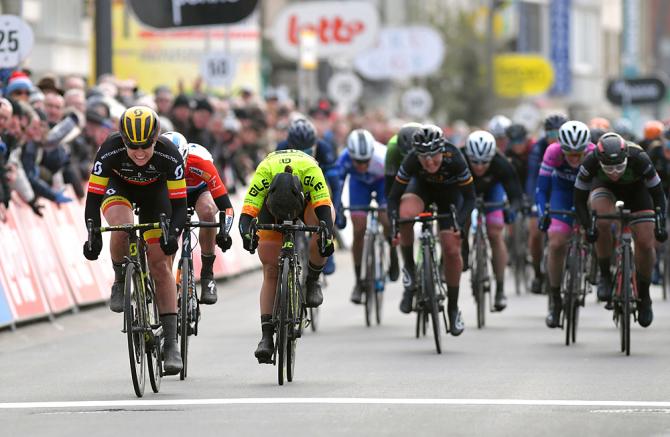
D'hoore dissects Tour of Flanders
Tour of Flanders is 151km and includes five cobbled sectors and 11 hills before finishing in Oudenaarde. D'hoore highlights some of the key sections of the course but says the most important considerations are to know the route in advance and to work as a team to stay well-positioned ahead of the main climbs.
"You need to know the course by heart; where the corners are and where the wind is coming from," she says. "You need to position yourself in front before all of the main sectors because you can win or lose this race otherwise.
"It's always a big fight coming into the important parts, so you need to work with your teammates to be at the front. There is also a bit of luck involved because everyone wants to be at the front."
The cobbles - five sectors in the first third
The flatter cobbled sectors all feature in the first third of the race. They start with Lang Munte (15km, 2,500m), Lippenhovestraat (36km, 1,500m), Paddestraat (37.5km, 2,300m), Holleweg (65.9km, 350m) and Haaghoek (71.6km, 2,000m).
Cobblestones sectors are part of what make Classics racing so severe, but D'hoore insists they're the mildest sections at the Tour of Flanders.
"The first part of Flanders is quite easy, more relaxed with big roads coming into the first hill," D'hoore said. "There is a long section before the Muur-Kapelmuur with all the cobblestone sectors. It's early in the race, and I don't expect anything serious to happen.
"Of course, you always need to be focused over the cobbles. It's important to be up front, to be cautious and to make sure you don't have mechanicals.
"But the main riders will not attack there because it's too early in the race. Riders still need to be careful not to get dropped off the back."
Muur-Kapelmuur - Maximum grade 20%
There is a succession of bergs following the flatter start - 11 bergs in all - but the first six, some with grades of 14%, are minor tests. Edelare (59.7km) is the first followed by Wolvenberg (63.2km, 645m), Leberg (72.1km, 950m), Berendries (76.1km, 940m) and Tenboose (81.1km, 450m).
The climbs to pay closer attention to are in the last 50km of the race; Muur-Kapelmuur (91.5km, 750m) maxes out at 20% near the top, and then with barely a chance to catch their breath riders hit Pottelberg (110.1km, 1,353m) and Kanarieberg (115.9km, 1,000m).
D'hoore points to the Muur-Kapelmuur and Kanarieberg as places where separations in the peloton will begin to happen.
"The most important parts of the Tour of Flanders start at roughly the 100km mark," she says. "When we hit the Muur, and the top at the Kapelmuur, this will be the first place to test our legs. It could also be one of the first places that key riders might attack.
"Kanarieberg is where you need to stay focused. If you survive these two climbs near the front, then you will be able to set yourself up for the final.
"At this part of the race, don't think too much and just go with the flow and ride in front. You might be struggling a little bit, but try not to think 'my legs feel like shit today'. You need to push through it and survive each section of the race to make sure that you are in the final with the best riders."
Oude Kwaremont - Attack!
The most decisive three climbs of the race are still ahead; Kruisberg (125.3km, 2,500m), Oude Kwaremont (134.2km, 2,220m) and Paterberg (137.7km, 360m). They are the most important because they are the hardest, they are closest to the finish line, and only the strongest riders are there at this late stage of the race.
"You can't just survive these climbs," D'hoore says. "You have to attack them if you want to play the final.
"It's hard to say which climb is the toughest because it's so personal for each rider. I love the cobbled climbs, and I prefer riding on cobbles over the hills. Maybe it's because I grew up with them. They make climbs easier for me, and I can save more energy compared to other riders.
"I would have to say the Kwaremont is the most important and the hardest. It's not as steep, but it's at a decisive part of the final, and it's a long climb."
The final - 13km to Oudenaarde - Play the game
There are roughly 13km from the Paterberg, the last of the bergs, to the finish line in Oudenaarde. The riders who make it to this point of the race in the front group are ultimately the ones who will be racing for a podium position. D'hoore says that this is where bike racing tactics play the most significant role in winning or losing.
"You have to look around," D'hoore says. "It all depends on who is still in the front group and how many teammates you have with you. Now, you just have to play the game.
"Do you have a sprinter or can you attack the group? You can't stick to one plan; you have to come up with several plans and play the game. Use common sense to figure out who you are with and what tactic is best to win the race."
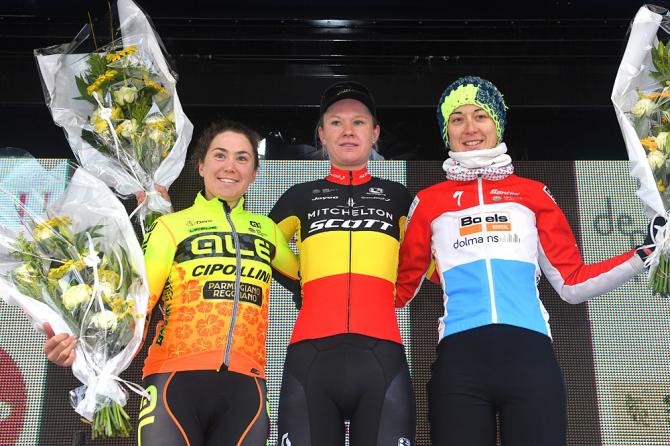

Kirsten Frattini is the Deputy Editor of Cyclingnews, overseeing the global racing content plan.
Kirsten has a background in Kinesiology and Health Science. She has been involved in cycling from the community and grassroots level to professional cycling's biggest races, reporting on the WorldTour, Spring Classics, Tours de France, World Championships and Olympic Games.
She began her sports journalism career with Cyclingnews as a North American Correspondent in 2006. In 2018, Kirsten became Women's Editor – overseeing the content strategy, race coverage and growth of women's professional cycling – before becoming Deputy Editor in 2023.